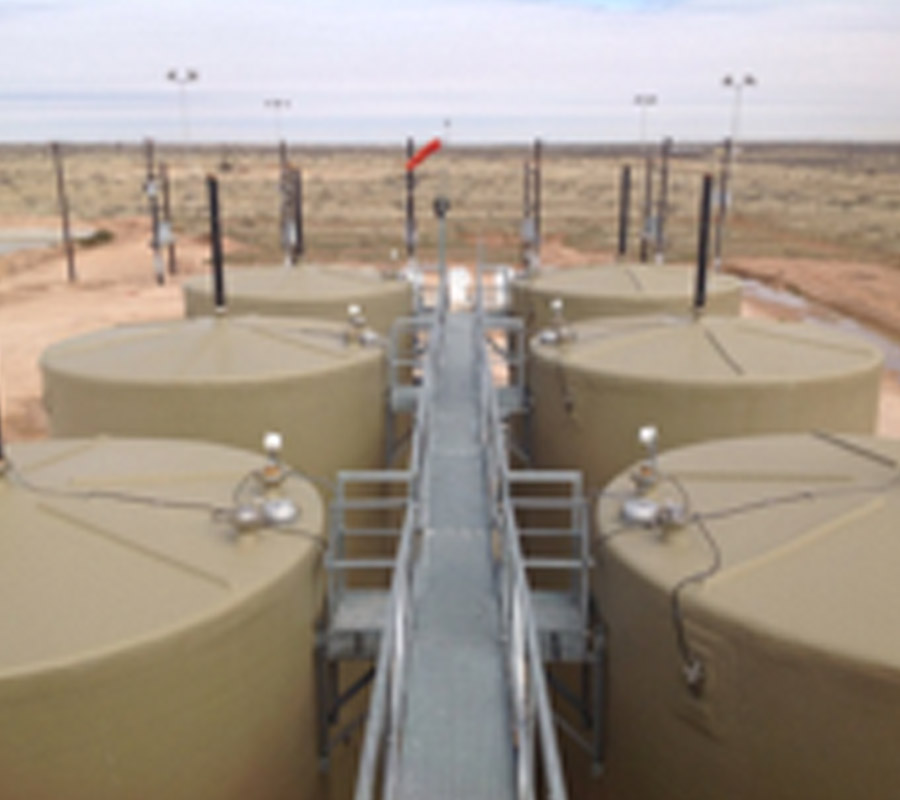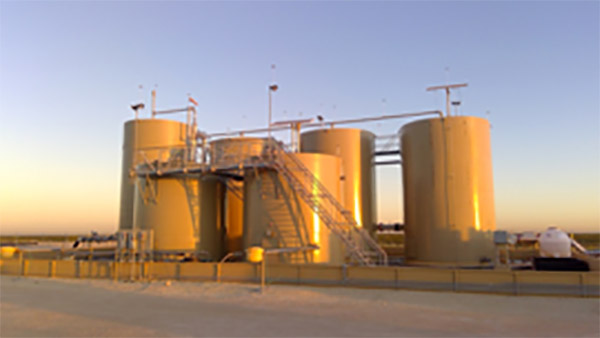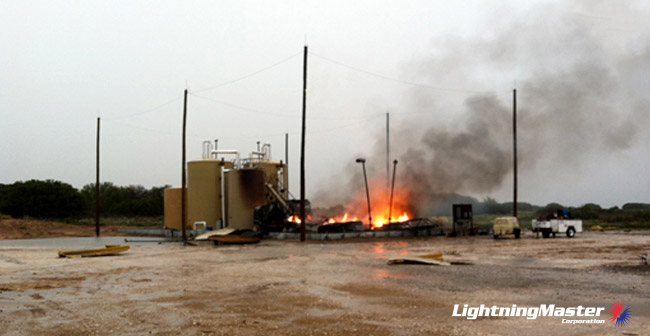The primary factor determining whether or not there will be a fire in the event of a direct or close lightning strike to a tank battery is the presence or absence of flammable gasses. The formula for this is rather simple: gasses = fire, no gasses = no fire.
The American Petroleum Institute API 2003, clearly states in 5.4.2 that most tank explosions due to lightning strikes have been attributed to roof openings that have been left open, corrosion holes in tank roofs, and vents that were not protected by flashback devices, such as pressure/vacuum vent valves or flame arrestors.
National Fire Protection Association NFPA 780, 7.2.1.1, states that a primary means to reduce the ignition of flammable vapors is to minimize the presence of those vapors in locations that are vulnerable to a source of ignition from a direct strike, lightning electromagnetic pulse (EMP), or secondary effect arcing. 7.2.1.3 goes on to require that openings where flammable concentrations of vapor or gas escape to the atmosphere be closed or otherwise protected against the entrance of flame.
Unfortunately, these requirements appear to be more honored in the breach than in the observance.
There are two places where lightning-caused ignitions may occur: inside a tank or outside a tank. Correct lightning protection bonding can greatly reduce internal ignitions. However, external ignitions are primarily subject to the presence of flammable gasses. With lightning channel core temperatures approaching 50,000˚ F, it stands to reason that a lightning strike to or near a site can easily ignite stray flammable vapors or gases. Even if lightning attaches to the lightning protection system, and that system works exactly as designed, stray gasses may still ignite.
TANK VENTING
Tank venting varies from a simple open hole in the top of the tank to the addition of a short standpipe atop the open hole to the addition of a pressure/vacuum valve or flame arrestor to the addition of a pipe manifold atop the standpipes to move the venting to the side of the battery with the addition of a pressure/vacuum device, or preferably a flame arrestor, to the end of the pipe manifold. The best method is to install a vapor recovery or other vapor eliminating system. Each of these designs progressively limits the presence of flammable gasses where lightning is likely to attach to the battery.

Open standpipe venting

Standpipe with vacuum/pressure relief valve

Vent pipe manifold with vacuum/pressure relief valve
REALITY CHECK
The expectation that any lightning protection system can stop all lightning damage is clearly hubris, and likely be the nemesis imposed by the jealous gods. API 2003, 5.1 clearly states that even when all known precautions are employed, prevention or safe dissipation of direct stroke lightning cannot be absolutely assured. In the case of indirect lightning currents, incendive sparks may occur in some segments of a system that use the best-known precautionary methods and devices. The methods discussed in API 2003, chapter 5 and NFPA 780, chapter 7 and annex N have been generally successful but are no guarantee of success.
API and NFPA both suggest additional, common-sense precautionary steps. During site design and construction, provide pressure/vacuum valves or flashback protection on all vents. As part of site maintenance, ensure that tank structures are in good condition with no holes or thin spots, and maintain pressure/vacuum valves or flashback protection in operating condition. During normal operations, ensure that all hatches are closed (and not opened during lightning storms), and cease tank movements during electrical storms.
BOTTOM LINE
Proper tank venting is a function of tank and site design and construction. It is beyond the control of the lightning protection designer or installer. As such, it is the responsibility of the owner/operator to ensure proper venting.
To stack the deck in your favor: install a properly designed system, don’t change, expand or modify the underlying site without modifying the protection system, don’t disconnect the system, do have the system inspected and maintained at least annually, and control the availability of flammable gasses for ignition.
For a more in-depth discussion of tank venting, please contact Lightning Master.


